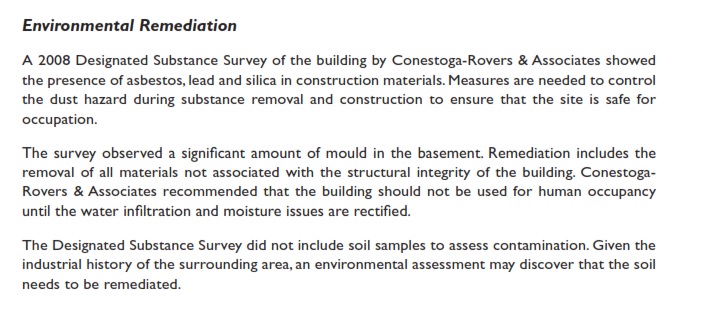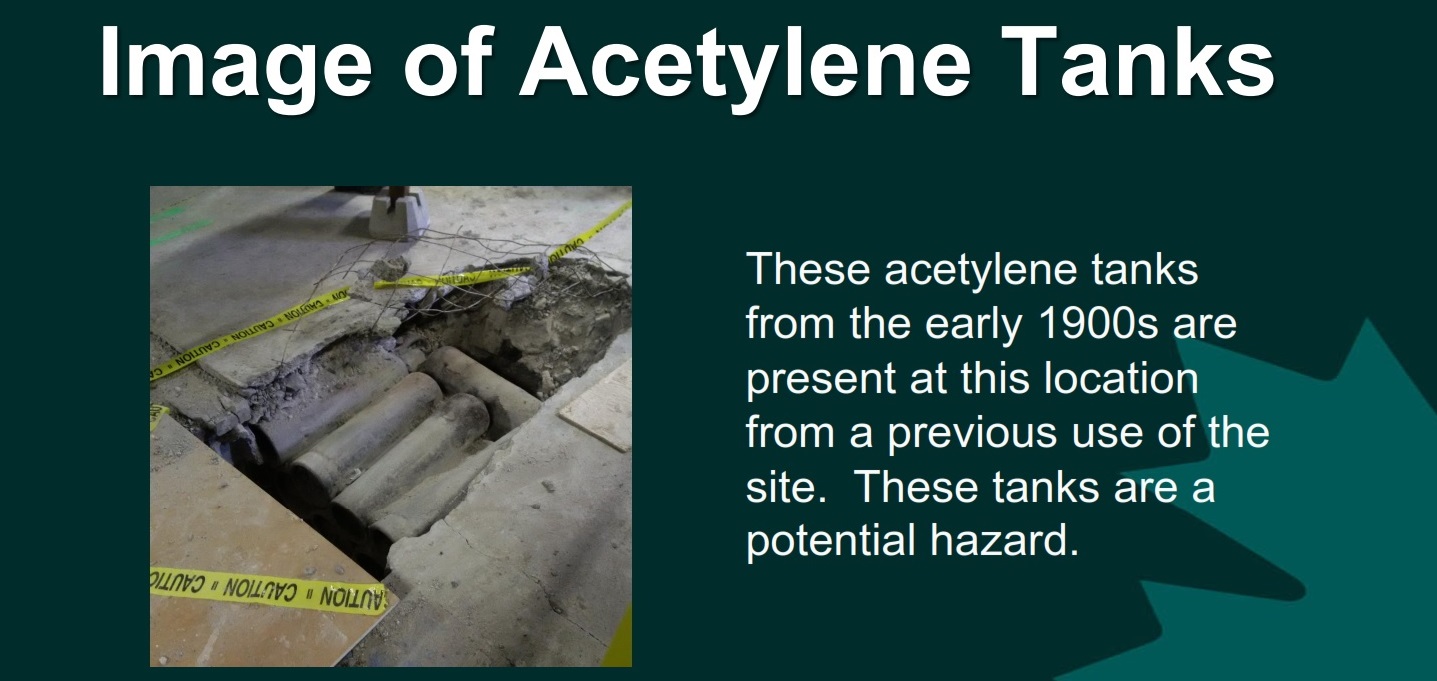October 2012
Victoria Island case study
On nearby Victoria Island, where no remnants of heavy industry from the likes of Domtar and E.B. Eddy exists, the example of 150 Middle Street provides a case study of how an administration building contains health hazards. How much worse is the contamination in buildings on Chaudiere and Albert Islands where there is a long history of industrial uses? Those who enter these sites need to wary of the deterioration that has occurred in abandoned buildings that Windmill Development Group has opened to the public since the spring of 2015.
Almost 3 years ago, the Makonsag Aboriginal Head Start child care program in Ottawa produced a detailed proposal [PDF available at link] asking the National Capital Commission for permission to use an NCC-owned building on Victoria Island for its operations. The proposal was turned down.


The building at 150 Middle Street on Victoria Island is now going to be used to create what some may call the NCC's token "aboriginal response" to Canada's 150th marking of Confederation. Cost of upgrades to the site are pegged at $630,000. More about that in a moment, but first some background.
Designated as a heritage site, 150 Middle Street consists of two adjacent buildings that were used for administration purposes and known as the Bronson Company Office.
At the start of its 2012 proposal Makonsag outlines safety concerns for 150 Middle Street:
Constraints: The heritage building is in an advanced state of disrepair. NCC prepared a 2012-2017 workplan (undated) that outlines projects to preserve the heritage value and to ensure the lifecycle management of the building. This work was conservatively estimated to value $128,800. The estimate does not include upgrading the electrical or plumbing systems, improving accessibility or bringing the building up to current fire code. It also does not include measures that are needed to remove existing hazardous substances (asbestos, silica, lead and mould) to ensure that the site is safe for occupation.
Source: Makonsag proposal 2012 [PDF available at link]
On page 16 of its proposal, Makonsag refers to a study from four years earlier (2008) that deals with health hazards associated with the building:

Fast forward to April 2016. In announcing its plans to spend $630,000 to turn 150 Middle Street into a so-called Confederation Pavillion, the NCC has acknowledged the presence of 50 acetylene tanks buried at the site.

Source: PowerPoint presentation of April 28, 2016 to NCC Board [PDF will load]
The NCC's April PowerPoint presentation does not refer to the lead, silica and asbestos that were highlighted in the 2008 Designated Substance Survey. Its focus seems to be on the extra costs associated with the discovery of acetylene tanks:
• During exploratory work, it was discovered that approximately fifty acetylene were buried under the building slab.
• For Health and Safety reasons, these must be removed prior to any work taking place. Removal and remediation is estimated at $150K bringing our total project costs to $630K.
What we know about Victoria Island's health hazards are in the public domain because the NCC has responsibility for the island. What does anyone know about the array of hazards that may exist on Chaudière and Albert Islands, to which the public is being invited for public and private events?
If it is using the buildings on these islands in marketing efforts, Windmill Development Group must tell the public what it's signing up for when it steps into aging buildings from the industrial past. At the least, the company can give people a chance to sign waivers that acknowledge the possible environmental contamination to which they are being exposed. Better yet, it should publicly announce whether the health hazards that appear to exist on the former industial site have been remediated. The public needs to be assured of this.